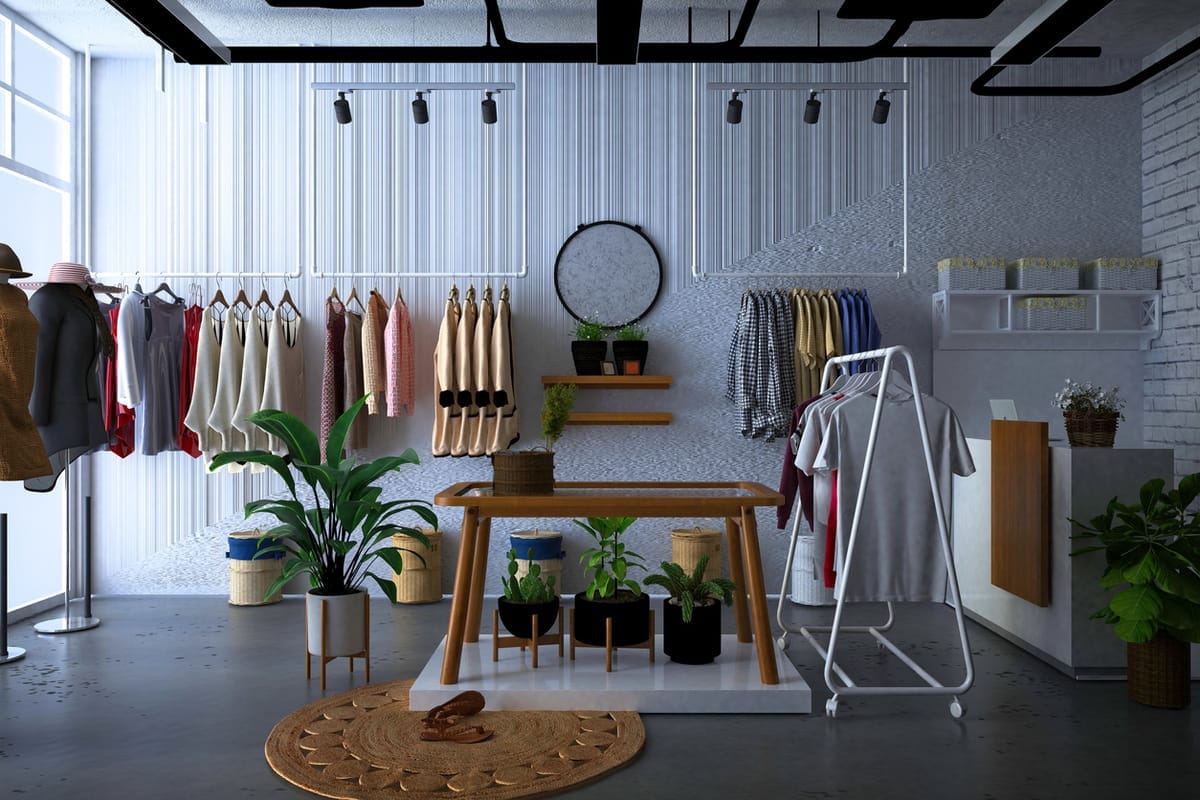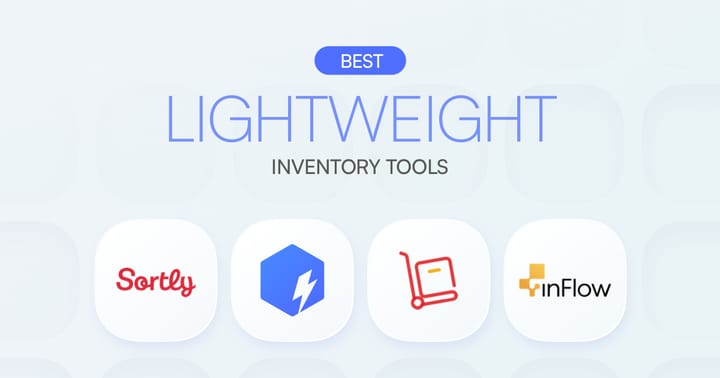What’s a Pop-Up Store? How to Get Started

"GRWM (Get Ready With Me)." "Unbox with me." "A Day in the Life…"
This type of content, popular among Millennials and Gen Z, dominate TikTok and Instagram reels. Young generations, who make up a significant portion of the global spending class, love and value experiences. They crave authentic and shareable moments. And their engagement online proves how powerful social media can be as a marketing tool.
So how do you tap into their desire for experiences while boosting word-of-mouth marketing? There’s one strategy that delivers on both fronts: pop-up stores.
Unlike traditional retail, pop-up shops create immersive and exciting shopping moments for customers. They’re a great way to introduce new products, connect with your market, and build brand awareness—all while creating buzz through freebies and limited-time offers.
In this article, we’ll break down everything you need to know before launching your pop-up shop:
• Commonly asked questions and things to prepare for your pop-up
• How to create memorable, experiential retail spaces
• Social media marketing strategies to make your pop-up a success
Pop-Up Shops 101
A pop-up shop is a retail store that opens for a limited period of time in a specific location, often to take advantage of seasonal demand or a trend. From the word itself, these shops ‘pop up’ temporarily to test a new market or promote a new product line.
Also known as “flash retailing,” pop-up shops offer a level of customer involvement that e-commerce can’t give. They provide visitors with a space to physically interact with the brand and try out products before making a purchase.
According to Statista, the top reasons U.S. consumers shop at pop-up stores are:
- Unique and exclusive products or experiences
- Curiosity, excitement, and entertainment
- To support local or independent businesses
- To get good deals or free items / services
- More personalized shopping experience
- To connect with brands or products for the first time

This concept isn’t new.
Temporary stalls and makeshift shops have been around for centuries. However, the modern pop-up model really took off in the early 2000s, especially in cities like New York and London. Entrepreneurs, artists, and designers use pop-ups to promote their work or explore new customer bases without the long-term commitment of a permanent store.
This has become even more popular amidst the retail apocalypse, which has led to the closure of many brick-and-mortar stores across the U.S. In response, businesses have adapted by shifting to online models and using pop-up shops as a creative way to launch short-term marketing campaigns in high-traffic, strategic locations.
Pop-Up Retail in Numbers
According to a recent report by Capital One, pop-up stores generate up to $80 billion in annual revenue. And market value is expected to surpass $95 billion by 2025. This figure includes not just traditional retail pop-ups but also independent sales such as yard sales, rummage sales, and food trucks.
What’s more, around 80% of retailers who have ventured into pop-up stores report them as a success, and 58% plan to open another. These statistics show why pop-up retail is a business strategy that is worth exploring.
Pop-Ups: Frequently Asked Questions (FAQs)
Before you think of the strategies to make your shop inviting for the customers, you need to prepare for the physical shop first. Here’s what you need to know and consider when setting up your pop-up:
Who can open a pop-up shop?
Anyone can! Online retailers, emerging brands, artists, and established businesses can use pop-ups to promote their brands, products, or services.
Where is the best location for a pop-up shop?
Look for areas with high foot traffic, such as malls, downtown hubs, universities, or busy neighborhoods.
Visit potential sites at different times of the day to observe foot traffic and check if the area's demographics match your target market.

What’s the budget for setting up a pop-up shop?
Costs vary depending on several factors. How big will the space be? How long will the event last? Mid-range or emerging brands often spend $5,000 to $20,000 monthly on pop-ups. For first-timers, plan your budget to cover retail space, permits, the point-of-sale (POS) system, and staff training to ensure a smooth launch.
How long should I run my pop-up shop?
Pop-ups can last from a few hours to several months, depending on your goals, location, and the level of customer demand.
Pop-Up Ready: Prep Guide
If you’ve secured a location and set your budget, it’s time to focus on creating a unique concept, designing your space, and managing your pop-up inventory.
- Create a Standout Concept: Think about the theme or purpose of your pop-up. If it’s a seasonal shop, design the space to align with the time of year. If you’re launching a new product or service, highlight its key features and benefits to grab attention and leave a lasting impression.
- Design an Eye-Catching Space: Your pop-up should reflect your brand and draw people in. Use colors and decor that match your identity, and consider adding Instagrammable touches like photo walls or creative displays to encourage social media sharing. Keep the layout simple and easy to navigate, making it fun for visitors to explore every corner.
- Prepare and Train Your Team: Your staff should know your products, your brand story, and how to provide excellent customer service.
- Keep Track of Your Inventory: As the event progresses, keep tabs on your sales and stock levels so you don’t run out of popular items. You can use an inventory management solution like BoxHero to make this process simple and easy.
• Our Barcode feature allows you to generate, design, and print your barcode labels for your pop-up inventories.
• You can set custom attributes (like types, limited-offer tags, return policy, etc.) for your pop-up items for easy categorization.


Beyond Retail: Tips for Experiential Marketing
One great thing about pop-up stores is the sense of urgency they create. People know these shops are only around for a short time, which encourages them to visit quickly.
As Stephen Hoch, a Wharton marketing professor, said:
“It’s about trying to get people there all at the same time to create additional excitement, because it’s a pop-up, and it’s not going to be there much longer.”
It’s important to make the most of your pop-up’s limited time and create a remarkable shopping experience for potential customers. Think of creative concepts and unique engagement strategies to make your pop-up shop more memorable.
Here are some ideas to get you started:
1. Create Personalized Experiences
Personalization is key to connecting with customers. Use interactive tools like kiosks, quizzes, or one-on-one consultations. You can even integrate AI-powered assessments to recommend products based on real-time customer inputs. For example, suggest skincare routines, outfit pairings, or even cosmetic products tailored to individual preferences. The goal is to make visitors feel involved.

2. Incorporate Audio-Visual or VR Elements
Take visitors on a journey through your brand’s story or product using audio-visual displays or virtual reality (VR). You can also showcase behind-the-scenes insights or virtual simulations of how your items can be used in real life.
3. Collaborate with Local Artists
Partnering with a local talent is a fantastic way to bring authenticity and creativity to your shop. Look for artists whose style complements your brand.
Take inspiration from the collaboration between Adidas and Alexander Wang. Their pop-up featured an unmarked mobile truck selling limited-edition, co-branded items. The concept was not just about offering exclusive products. It was made to connect with their audience. The simple packaging and minimalist approach made the pop-up feel authentic and rooted in the street culture both brands wanted to celebrate.
As Ferdinando Verderi, creative director of Johannes Leonardo, explained:
“Those trucks, trash bags, and everything were essentially digital ideas because we knew they’d travel the world on social media. We knew we were talking to a real community, so there was no need to fake it. Let’s just be there on the street... A lot of this street culture is being part of a specific moment.”
For small or medium business owners, you can team up with local influencers or vloggers whose niche resonates with your business. These collaborations don’t have to break the bank; offering free products, exclusive discounts for their followers, or hosting an influencer event at your shop can create hype and attract their audience.
4. Customize Your Product Offerings
Create items or deals that are exclusive to your pop-up. Consider limited-time offers, discounts, or special product bundles to attract visitors. Bundling is a great way to drive sales by grouping related items and selling them as a package. Popular types of bundles across industries include set bundles, gift, cross-sell, new product, and seasonal bundles. Feel free to choose the type that works best for your pop-up shop.


5. Encourage Customer Feedback
Set up digital tablets or interactive walls where visitors can leave real-time reviews or suggestions. To increase participation, offer small incentives like discounts, freebies, or entries into a giveaway.
For even more convenience, provide a QR code that links directly to an online survey. This allows customers to share their thoughts at their own pace.
Social Media Tips for Your Pop-Up
Now that we’ve touched on all the things you need to prepare for your pop-up, let’s talk about how we can make use of social media.
Using platforms like Instagram and TikTok, you can spread the word and create excitement with these content ideas:
▶︎ Before the Launch
- Teaser posts or videos announcing the pop-up and any influencer partnerships. Examples: “Save the Date” or “Something exciting is coming...”
- Behind-the-scenes clips showing preparations or sneak peeks of the space and products.
- Instagram stories with countdown stickers to build anticipation.
- Q&A sessions or polls asking followers what they’re most excited to see.
▶︎ During the Launch
- Go live on Instagram or TikTok to show the action in real time, including walkthroughs, guest interviews, or product demos.
- Share high-quality photos or videos of influencers interacting with visitors, trying products, or enjoying activities.
- Highlight special deals or limited-time items only available at your pop-up.
- Encourage visitors to share their experiences using your official hashtags.
▶︎ After the Launch
- Post a carousel or video of the event highlights.
- Share a thank-you post for visitors and any influencer collaborations.
- Feature user-generated content (UGC) by offering freebies or incentives for participation. Repost this content to keep your pop-up in the spotlight even when it’s over.

Wrap-Up and Review: Your Next Steps
Once your pop-up event is over, it’s time to see how well you did. Analyze consumer behavior, identify your best-selling items, and review your special offers performance. This post-event assessment helps you understand what worked well and what could be improved.

Also, don’t forget to gather customer feedback! It can offer valuable insights for planning an even better pop-up next time.
Conclusion
From choosing the perfect location and crafting a unique concept to designing Instagram-worthy spaces and streamlining inventory management, every detail matters in making a pop-up successful.
BoxHero helps you stay organized with your inventory so you can focus on delivering exceptional retail experiences for your customers. Try it for free and see how you can power up your pop-up!


